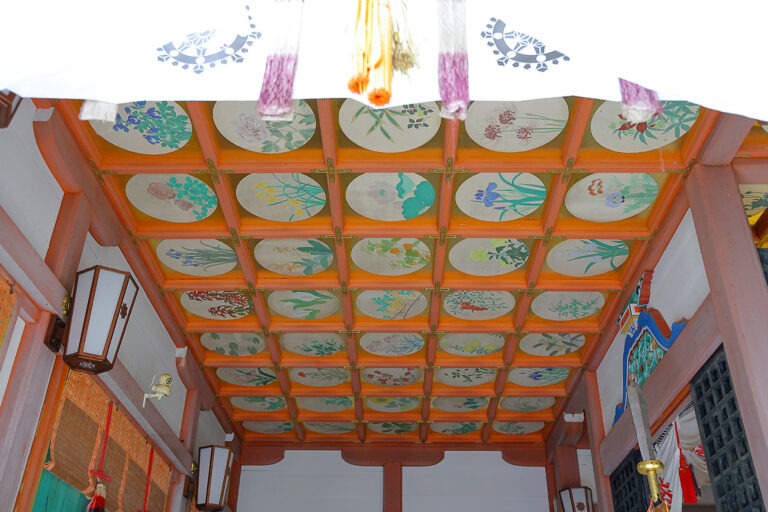
The god of victory smiles [Aga Shrine Tarobogu Shrine]
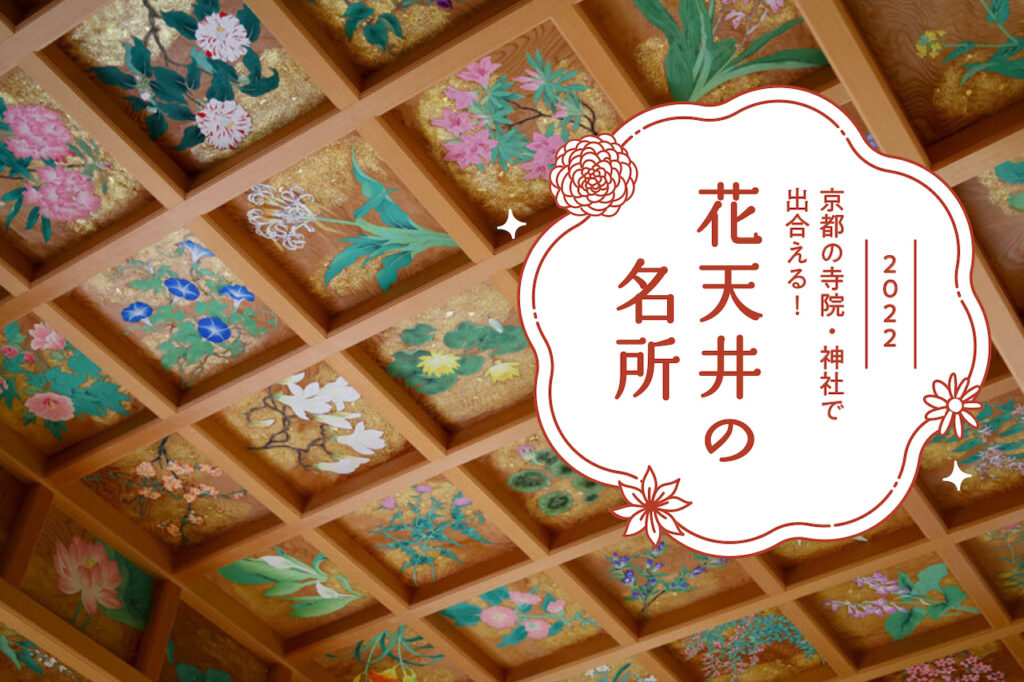

Hana-tei (flower ceiling) is found in temples and shrines, and is characterized by a variety of flowers painted one at a time on each square of the coffered ceiling. They are said to express the meaning of respect for the Buddha and gods enshrined there. Many of them have high value as cultural assets and are valuable as representations of the times and culture. When you visit Kyoto, be sure to see them.
The temple was converted into a temple in 876 (Jougan 18), and was a prestigious monzeki temple where the emperor or a member of the imperial lineage served as the head priest until the beginning of the Meiji Era (1868-1912).
The temple is also the head temple of the Saga school of ikebana, a school that inherited the Emperor Saga's love of plants and trees, and is known as a temple of flowers, with many sliding door and ceiling paintings depicting flowers. There are 440 ceiling paintings in three locations on the temple grounds. Reimeiden is not open to the public, but the ceiling paintings in Renge-den near Osawa Pond can be viewed only during special openings, and those in Yasui-do can be viewed at any time.
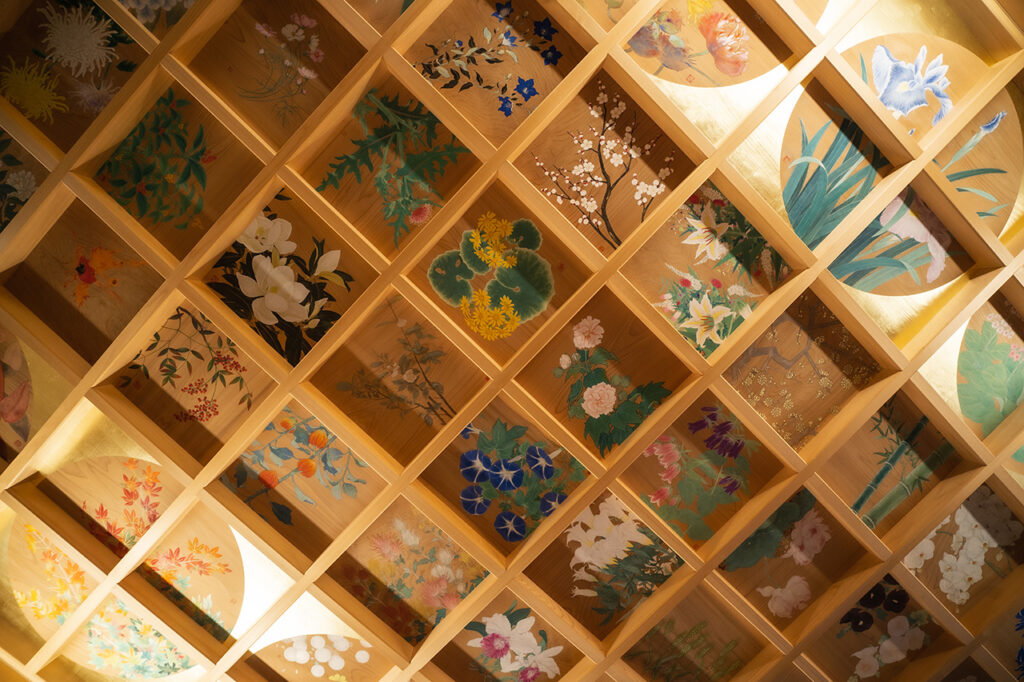
The theme of the Renge-den Ceiling Paintings by Osawa Pond is "Hana Mandala"; 78 paintings created in 2017 (Heisei 29) by 73 Saga Art College associates are on display.

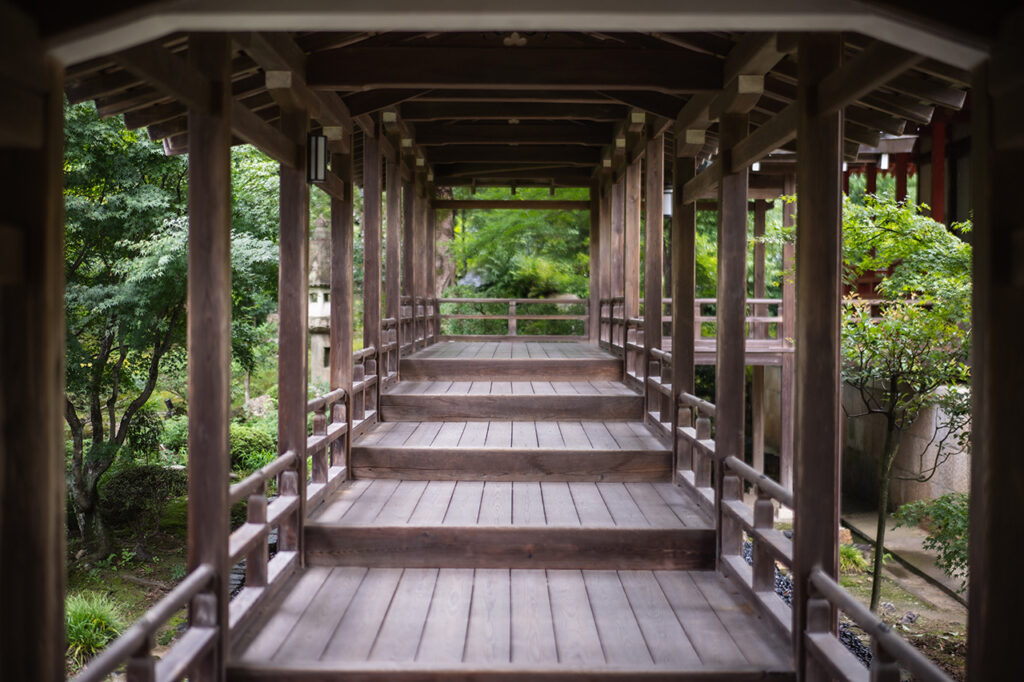

Kurumaori Shrine is dedicated to Kiyohara Yoriyoshi, a Confucian scholar of the Heian period. In addition to being the god of academics, the shrine is known for its blessings such as prosperous business, financial fortune, and good marriage.
The flower ceiling is located in the hall of worship leading to the main hall. When you look up, you will see 36 paintings all over. The motifs are flowers such as lilies, hydrangeas, and kiku, vegetables such as watermelons and turnips, swimming fish, and birds perched on tree branches.
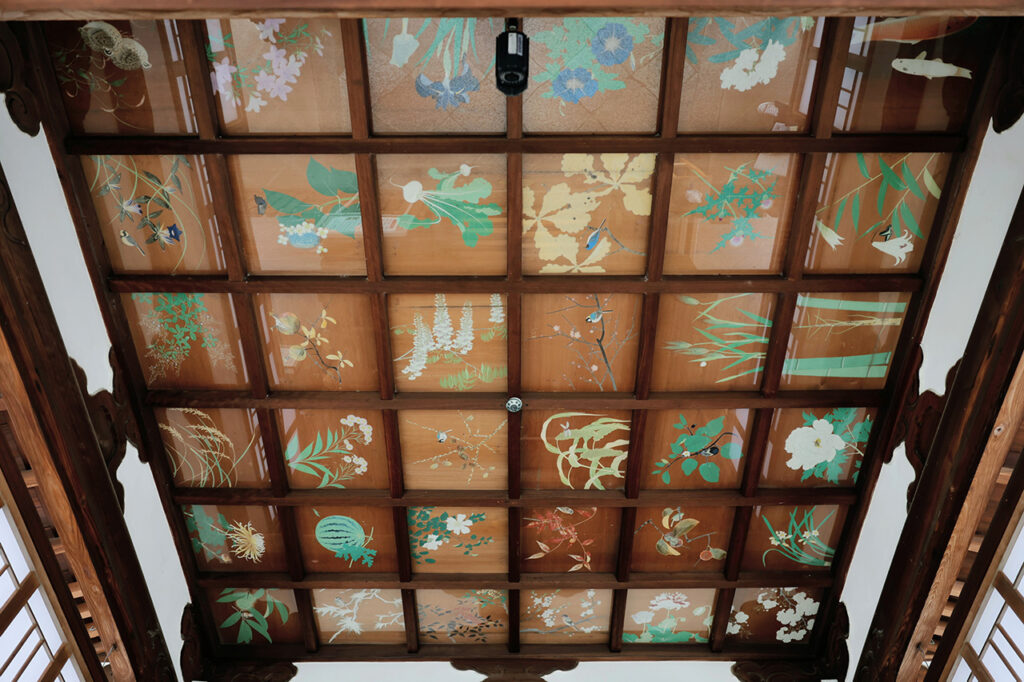
The date of production is unknown, but the painting already existed when the shrine was completely renovated in 1988. The artist is Reiki Yamaguchi, a Japanese-style painter active from the Taisho to Showa periods.

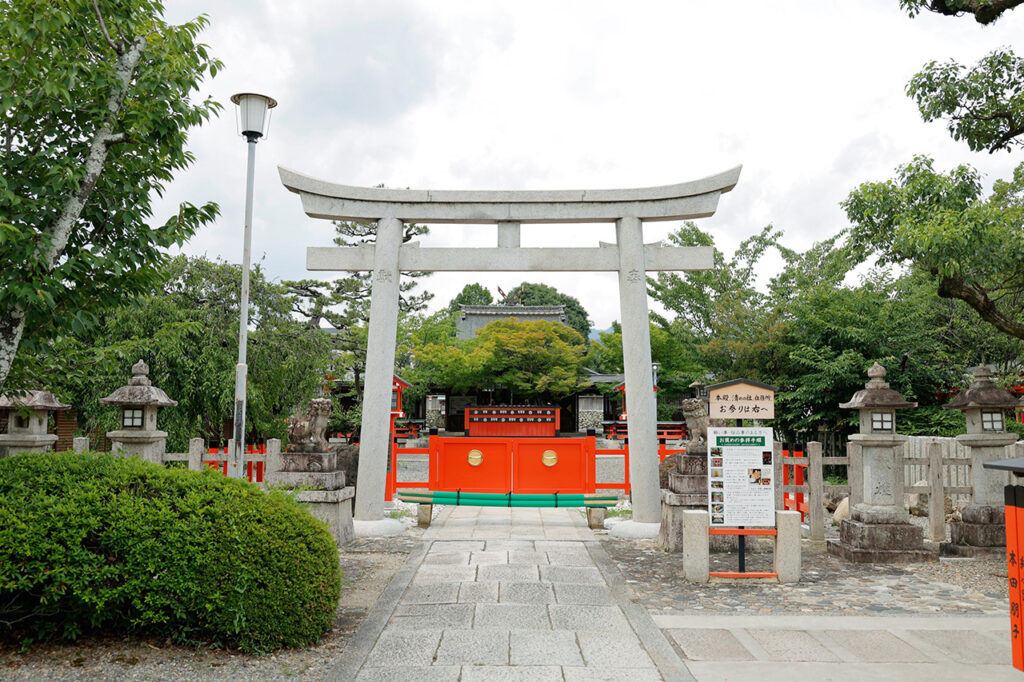

It was built in 1200 (Shoji 2) as a pagoda temple of the Iryo Kyokoji Temple. Every summer, the temple holds a wind-bell festival and is also called Kyoto's wind-bell temple.
The 160 ceiling paintings decorating the Kyakuden were created as a reconstruction of the Edo period ceiling paintings in the inner sanctuary of the main hall. About 90 Japanese-style painters collaborated to create the ceiling paintings, which are based on the theme of flowers or Japanese landscapes. Using traditional pigments such as iwa-enogu (mineral pigments), the paintings on the cedar panels depict a wide variety of Japanese and Western flowers, including camellias and clematis, the Watarigatsu Bridge in autumn, carp streamers, maiko (apprentice geisha), and blue ocean waves. The works are all in perfect harmony with each other and are overwhelmingly beautiful.
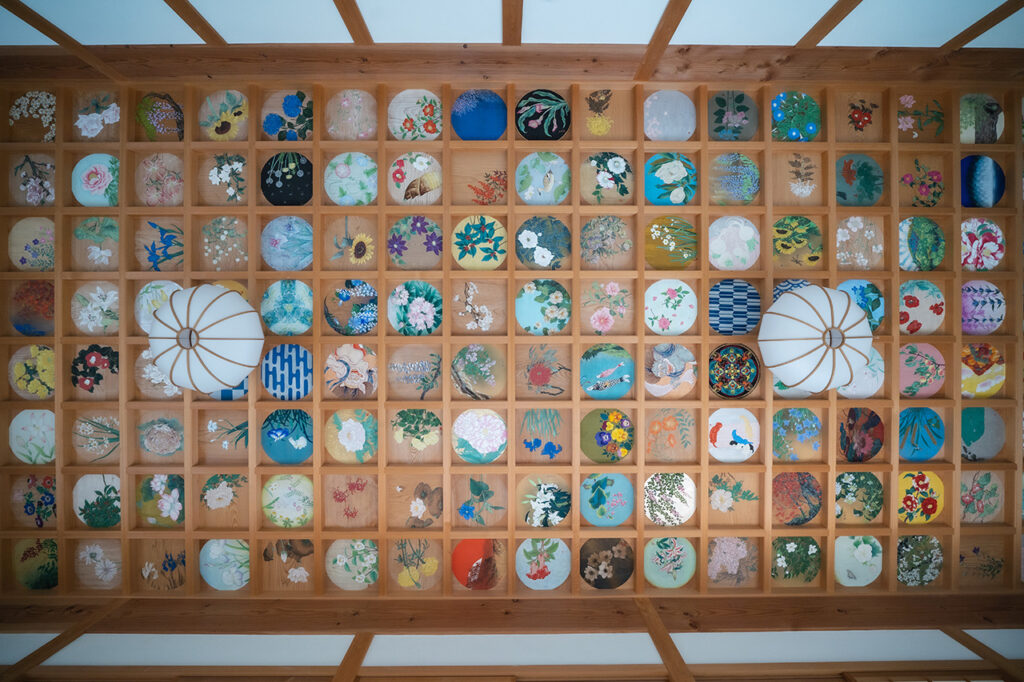
The ceiling was painted by about 90 Japanese painters ranging in age from 20 to 70, including Tomoko Takarai and Rie Yamada.

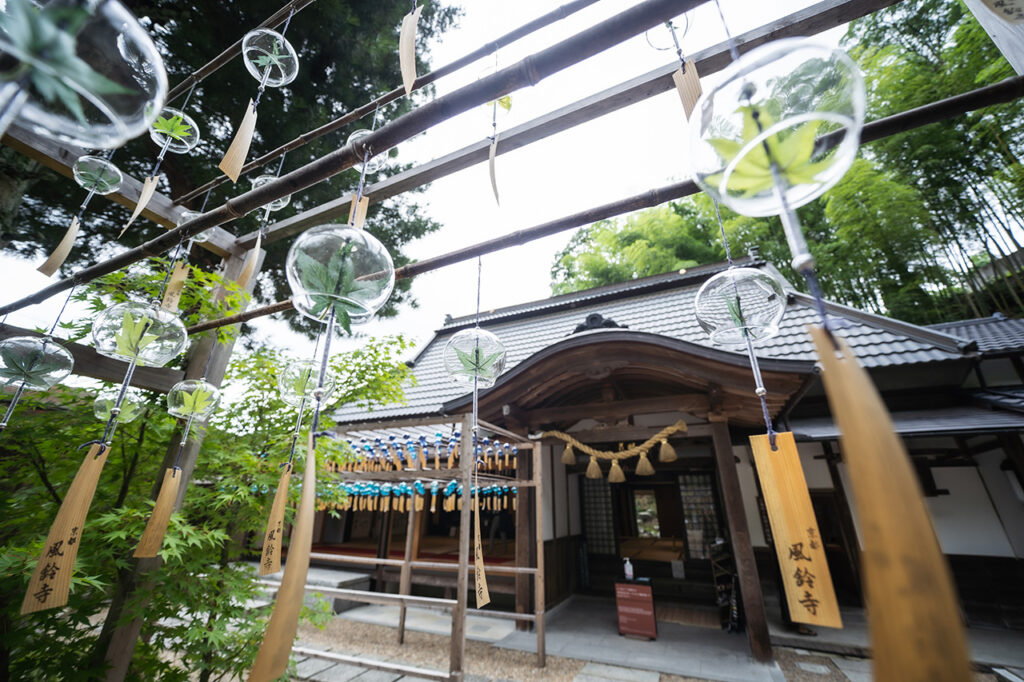

This is a temple of the Koyasan Shingon sect founded by Rinsei Shonin in 732. It is the second of 25 Flower Temples in Kansai, and visitors can admire lotus, azalea, camellia, and other flowers depending on the season.
The main hall where the flower ceiling is painted was completely reconstructed between 2002 and 2003 to its current appearance due to the deterioration of the main hall built in the Genroku era (1688-1704). The flower ceiling painted at that time is the "Rurikoka Mandala" by Keisho Maruyama and Shinsho Maruyama, both direct descendants of the Maruyama School by Okyo Maruyama. There are 96 flowers painted directly on Akita cedar boards, and many familiar flowers and plants are depicted, including morning glories, hydrangeas, and cherry blossoms.
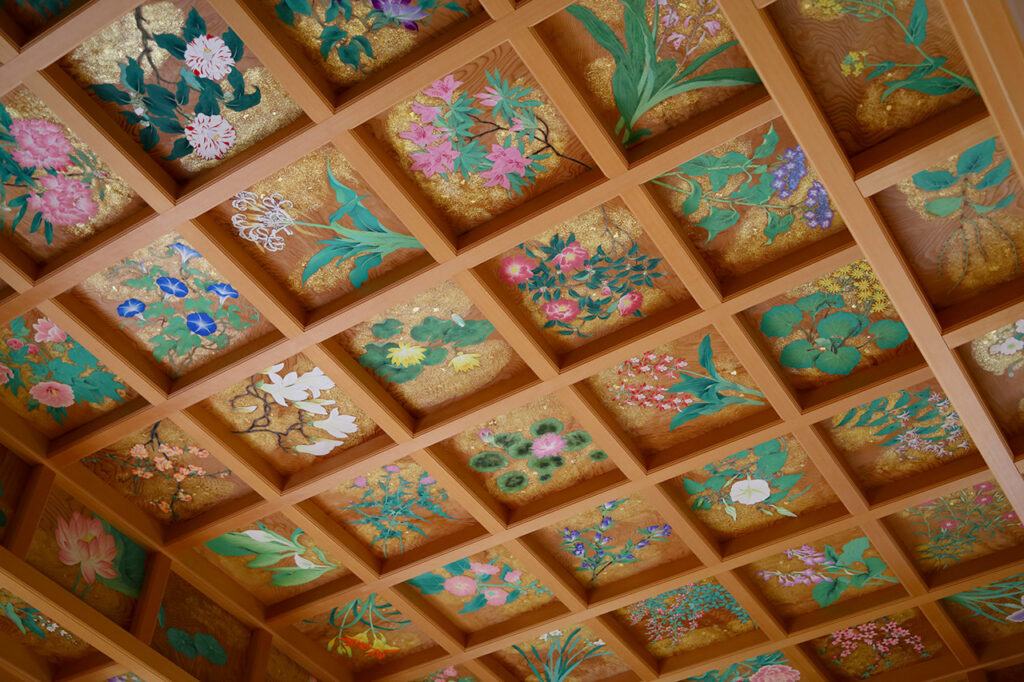
The main hall of Ryogonji Temple, known as the Temple of Flowers, is decorated with 96 paintings of flowers. All the side panels are painted with lotus flowers, representing the flow of flowers from bud to bloom and fall.

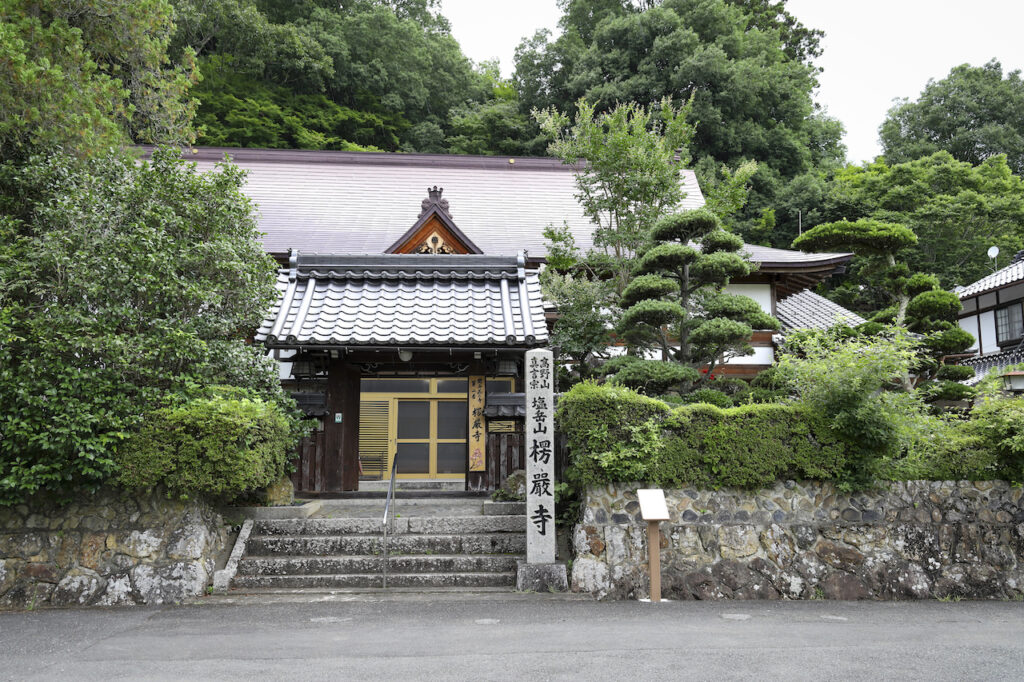

It was built in 809 (Daido 4) by Kobo Daishi as the guardian deity of Jingo-ji Temple, with a statue of Hachimanjin in the form of a priest, which he himself painted. It was destroyed by fire during the Muromachi period (1333-1573), but was rebuilt by Ashikaga Yoshimitsu, the shogun of the time.
The present shrine pavilion was restored in 1826 by order of Emperor Niko. The flower ceiling in the inner sanctuary is also from that time, with 44 paintings of flowers and medicinal herbs such as kanzo, etc., in richly colored colors. It is open to the public every spring and fall, and can be viewed with commentary by Shunsuke Sasaki, the chief priest of the shrine. It is also famous for its camellias and Takao maple trees, which are at their best during the special fall viewing.
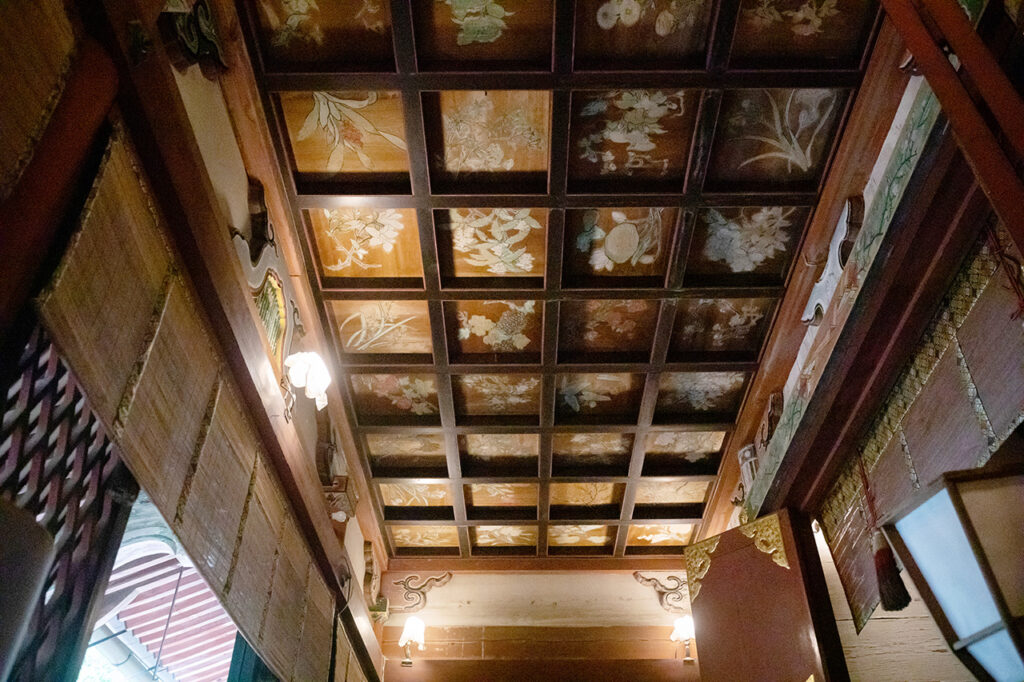
It was painted in 1827 by the painter Kanejiro Ayato Fujiwara no Makoto. The area around Umegahata used to be a medicine-producing region, so medicinal herbs are also depicted.

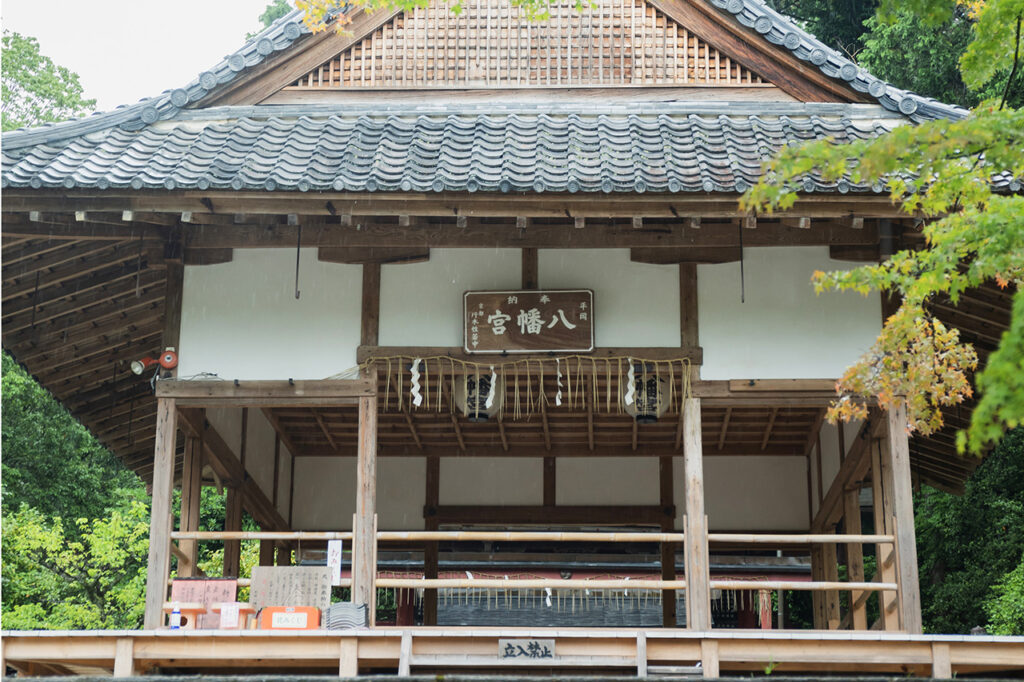

A temple of the Tendai sect, founded by Toyotomi Hideyoshi in 1586.
The hana-temple ceiling is located inside Daikokudo Hall, which enshrines Daikokuten, a goddess said to have been carried by Hideyoshi as a talisman. There are 80 floral ceilings painted in the inner sanctum of the hall, all with different pictures of flowers. The ceiling inside the bell tower, where the temple bell is located, is also painted, so be sure to observe both ceilings carefully when you visit the temple.
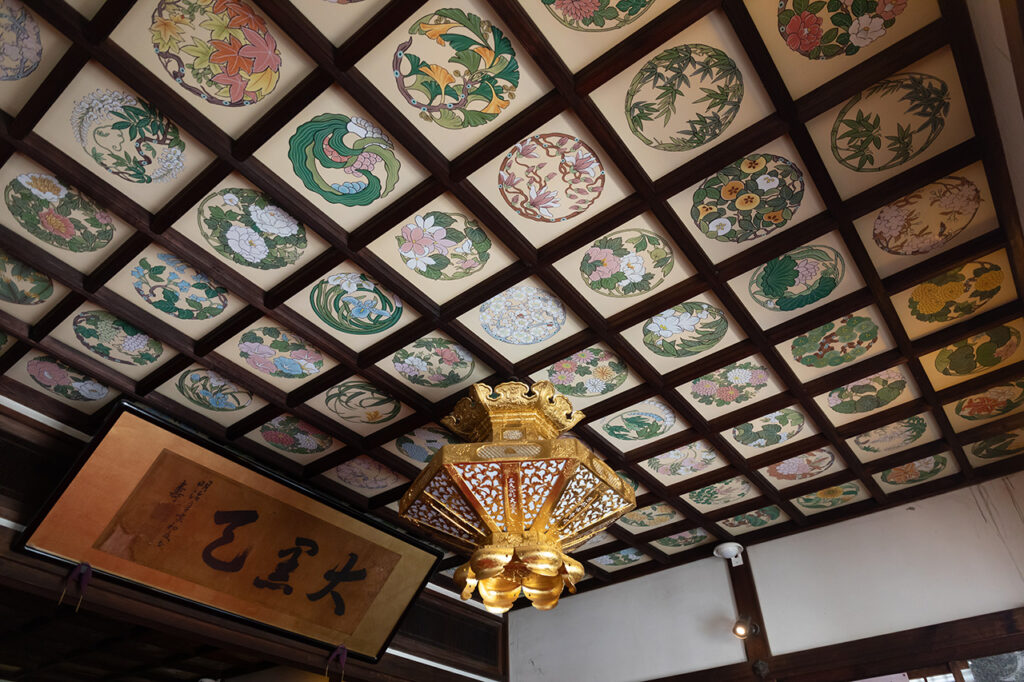
Visitors can see lovely flowers painted in a circular pattern. In addition to Japanese flowers, colorful Western flowers decorate a total of 80 ceilings. Production period and painter are unknown.

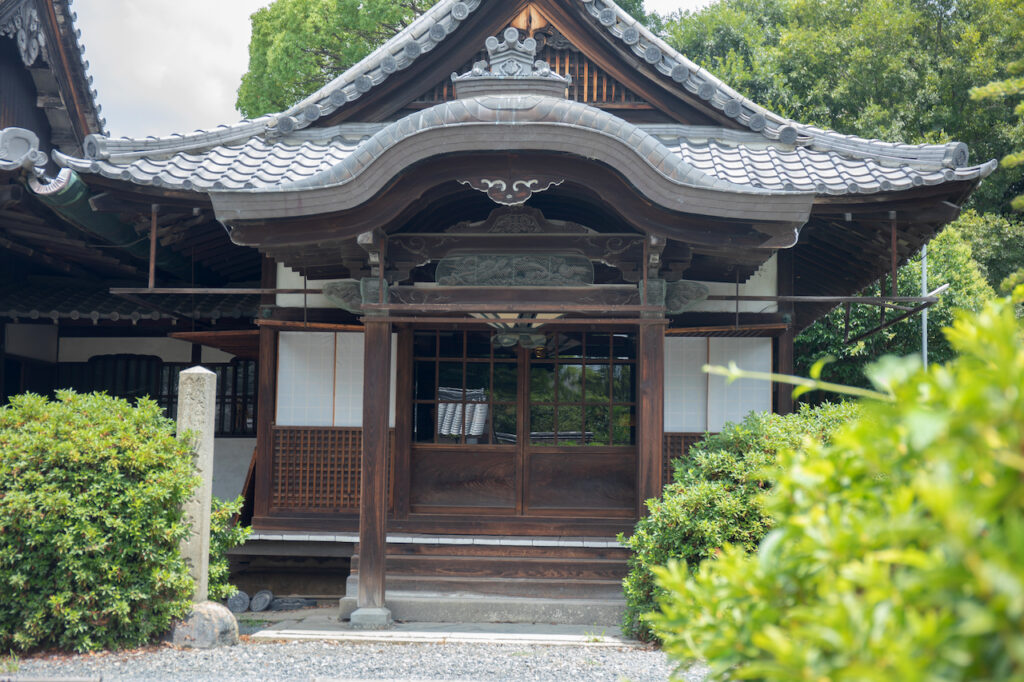

The head temple of the Shinmon school of the Lotus Sect, founded by Nisshin Shonin in 1488 (Chokyo 2), blending in with the old streets of Nishijin.
In the inner sanctuary of the Soshidō Hall, an Important Cultural Property, plants are painted on more than 150 surfaces on the mirror panels of the coffered ceiling. The background is characterized by a deep blue, and although the colors have faded, remnants of the vivid colors can be seen in places. The main hall is currently undergoing restoration, which will be completed next year. The Soshido-Hall is usually closed to the public, but visitors wishing to view the hall must make a reservation by the same day. Restoration is scheduled to begin next summer.
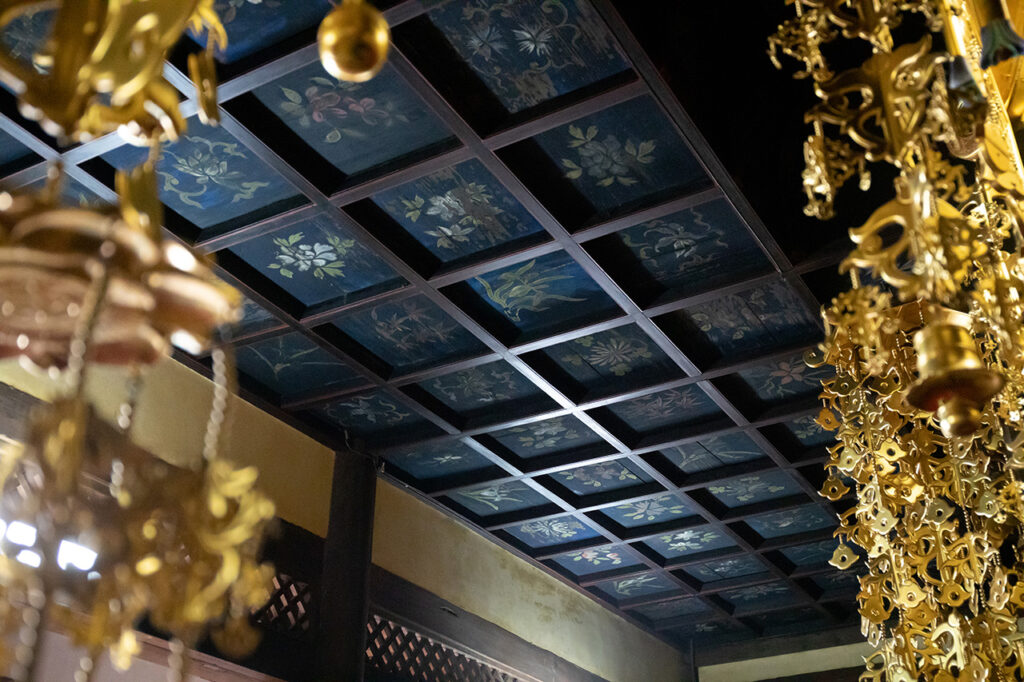
The painter and the date of production are unknown, but the work is believed to be from the early Edo period. Note the black-lacquered coffered edge of the coffered ceiling.

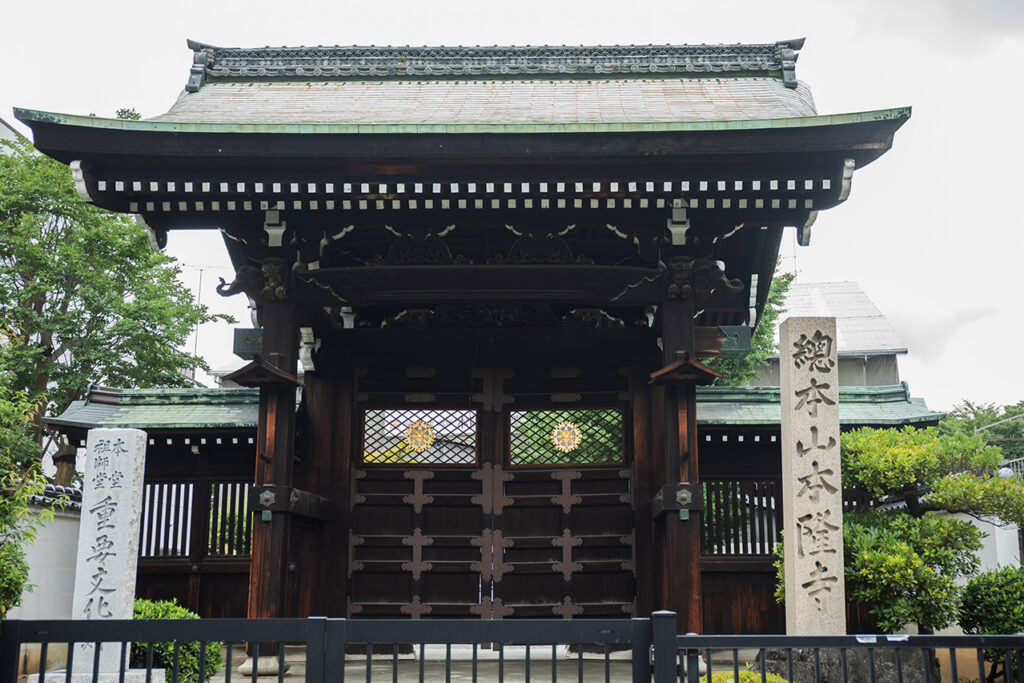

The garden and sukiya-style architecture spread over an area of 500 tsubo (1,860 m2), and in 1970, the late Mitsuo Yamamoto, president of the Kyoto lumber mill Yamazan Sawmill, took over the house, renovated the dilapidated garden, and partially renovated the building. The house has been used as a place for socializing, mainly by renting the entire building year-round.
The Western-style room with a flower ceiling was added during the renovation. Six flower paintings surround a chandelier. It used to be a guest room with a luxurious sofa. The floral ceiling probably added color to the hospitality of the guests.
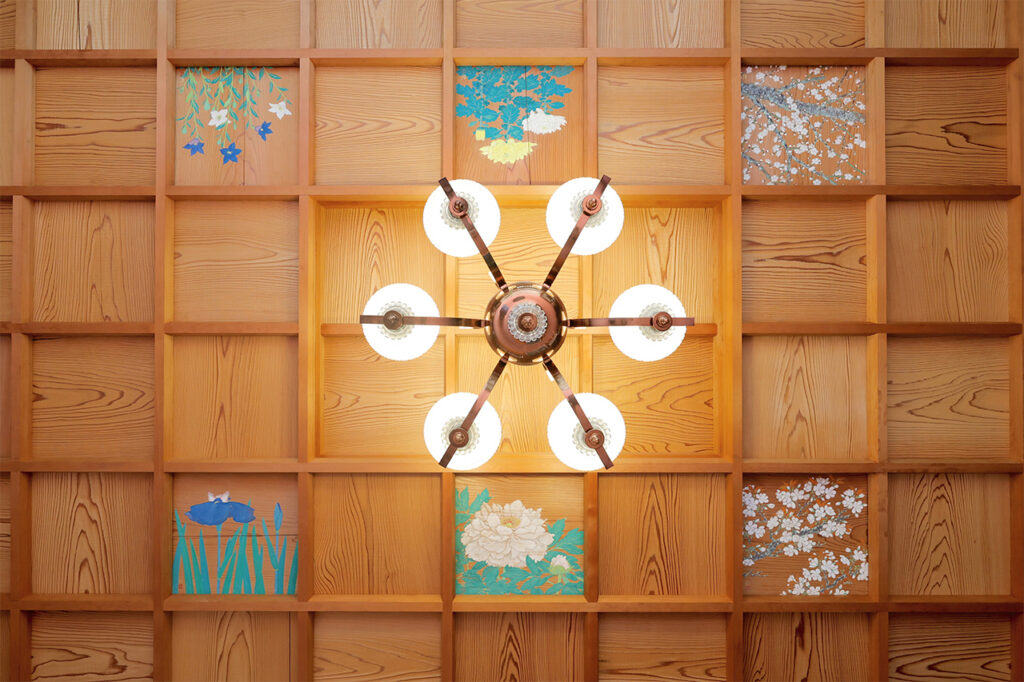
Although the date of production is not clear, it is estimated that a flower ceiling was also painted when the building was expanded. The artist is Akira Muto, a Japanese-style painter whose works were in Mr. Yamamoto's collection.

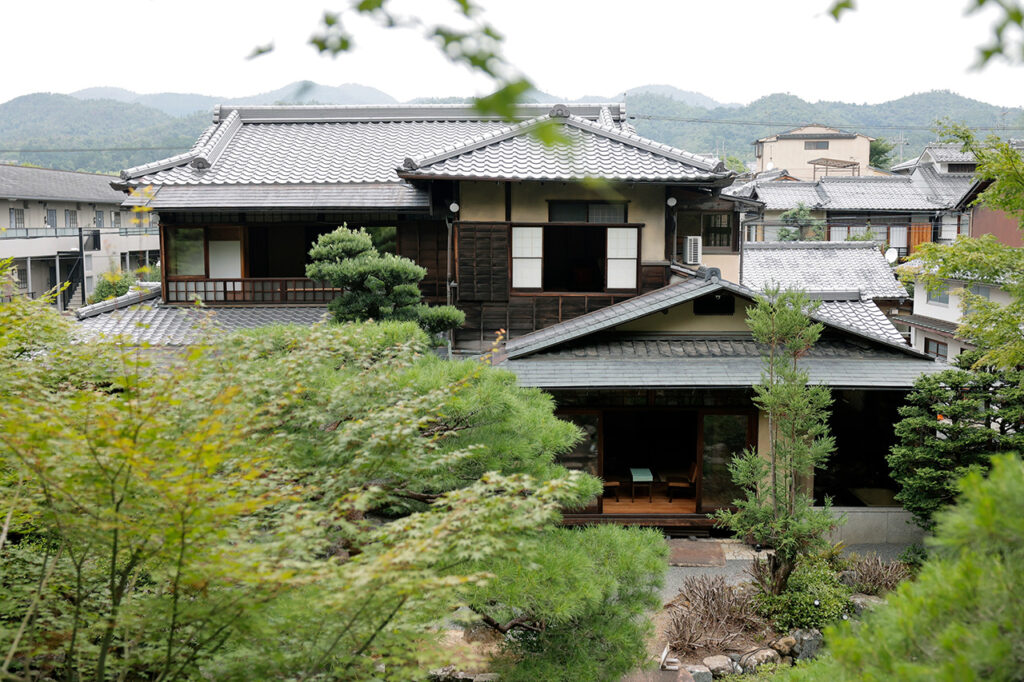

In the Heian period (794-1185), Kobo Daishi built Tsujido at Rokudo Tsuji, located at the entrance to Toribeno, one of the three major burial grounds in Kyoto, and enshrined a Jizo statue of his own creation. It is still worshipped today as a child-rearing Jizo, a child-supporting Jizo, and a child-supporting Jizo.
Currently, there are no special openings, and the floral ceiling cannot be viewed from inside the main hall, but it can be seen from outside. The flower ceiling, created in the Showa period (1926-1989), depicts many Western flowers such as iris, gerbera, and bougainvillea.
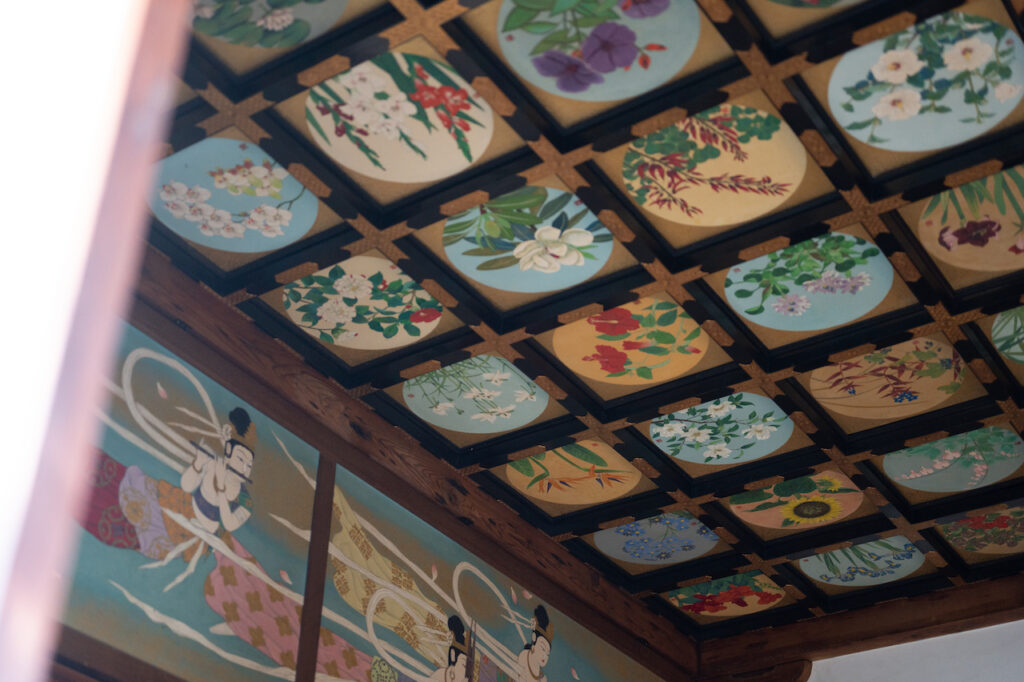
Dedicated in 1983 by Japanese painter Yuzumi Morimoto and his students as a memorial service for the 1,150th anniversary of Empress Danrin's death. Nine of the 64 panels were created by Morimoto Yuusen.

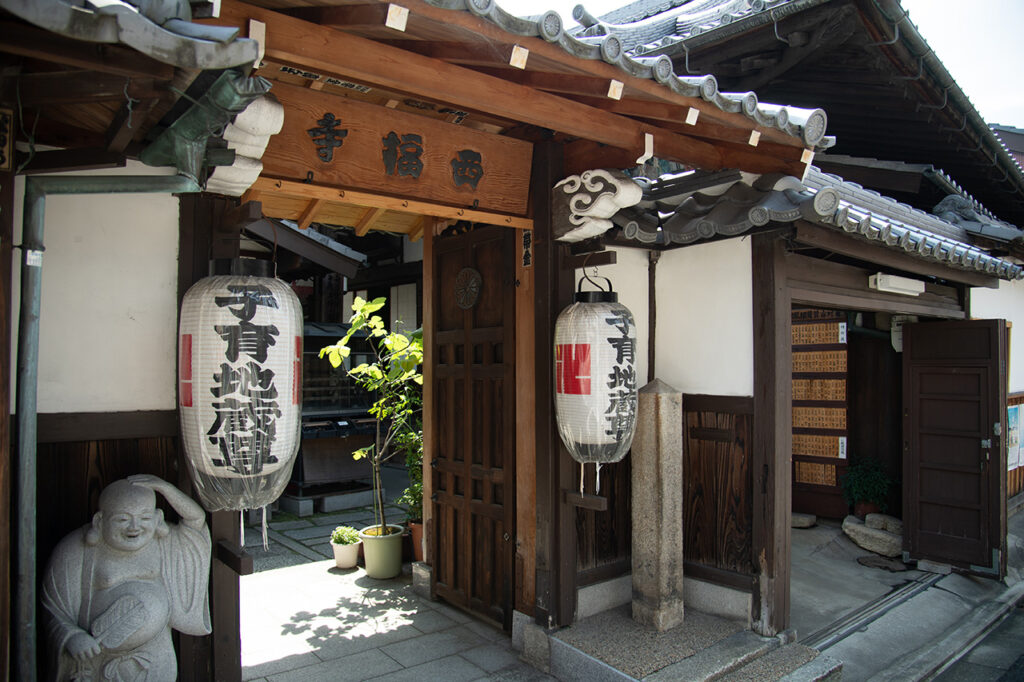

Also known as Jouban Gosho, this nun-monzeki temple of the Jodo sect was founded in 1356 by Princess Shinko, daughter of Emperor Go-Fushimi, in the northern part of Muromachi Ichijo-kita.
The interior of the hall has a folding top ceiling that gives a sense of prestige, and the 80-sided flower ceiling in the center of the hall is magnificent. The 80-sided flower ceiling in the center of the hall is magnificent. The elegant and dainty atmosphere of the flowers, which is typical of nun monzeki, is a sight to behold. The temple grounds also include Tokiwa Kaikan, a building that was moved from the Showa Period (1926-1989). Normally, these buildings are closed to the public, but they are open to the public on special occasions, so take the opportunity to visit.
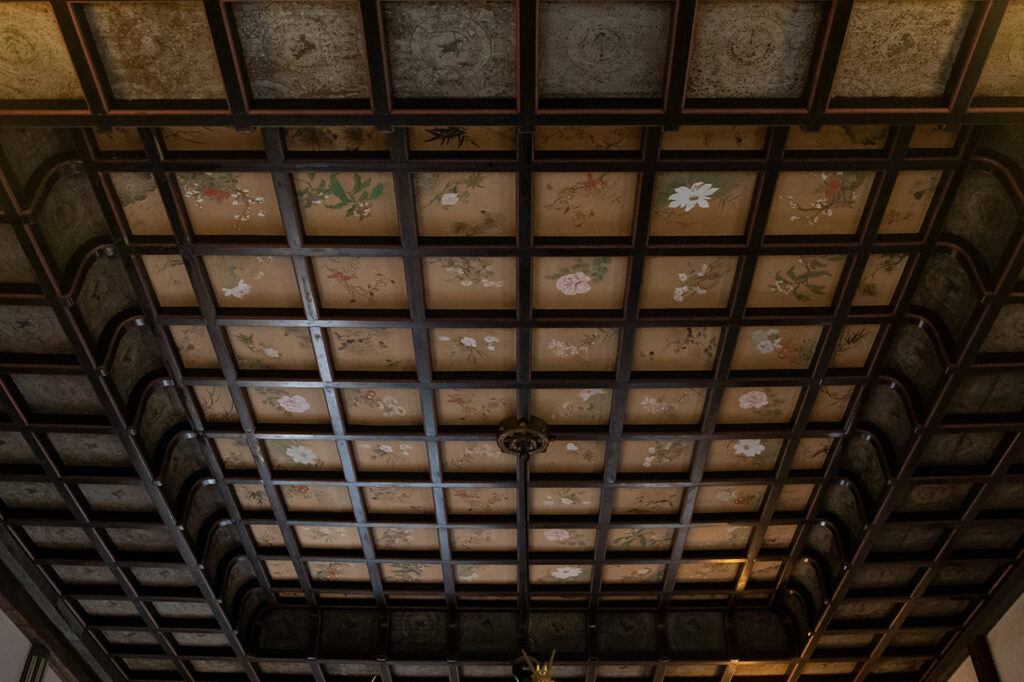
The hana-tei (flower ceiling) was created by Kyoto-born nanga artist Naogai Tanomura in 1968, the same year the main hall was built. Flowers such as ume (Japanese apricot), kiku (Japanese aster), and lotus are depicted.

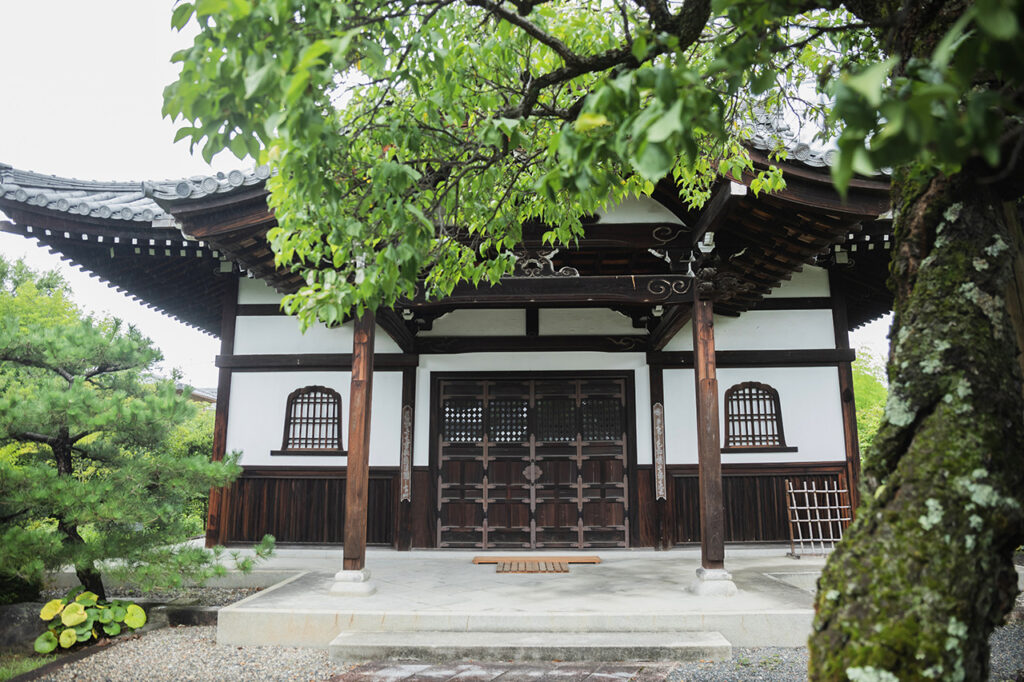

Over 600 interviews per year! An order site carefully selected by the editors who knows Kyoto and Shiga.
nowOfficial LINE friend registration500 yen OFF coupon is being issued!
Distributed every Friday morning at 8:00 am! From new restaurant information to event information that we want to share with you, We deliver articles about Kyoto that are useful to know. About 20,000 people have registered.Click here to add a friend!
 News
News Feature article
Feature article Featured event
Featured event